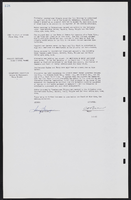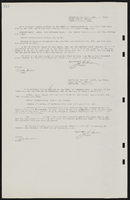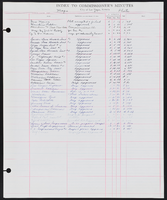Search the Special Collections and Archives Portal
Search Results
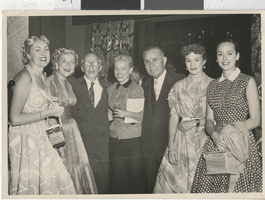
Photograph of Betty Hind, Dub McClanahan, and others, Las Vegas (Nev.), circa 1948
Date
1948 to 1949
Archival Collection
Description
A large group of people, including Betty Hind and Dub McClanahan, probably at the Thunderbird Hotel, which opened on September 2, 1948. Site Name: Thunderbird Hotel (Las Vegas, Nev.)
Image

Transcript of interview with Richard Caldwell F. Sr. by Melvin Thompson, March 11, 1981
Date
1981-03-11
Archival Collection
Description
On March 11, 1981, Melvin Thompson interviewed Richard F. Caldwell Sr. (b. 1919 in New Orleans, Louisiana) about his experiences living in Las Vegas, Nevada for over 49 years. The interview begins with Caldwell discussing his family and what brought him to Las Vegas. He then talks about working at the Nevada Test Site, the hotels and casinos that were built on the Strip, his experience working at some of those properties, and the way of life in Las Vegas in the 1940s and 1950s. The two also discuss politics, religion, and recreational gambling in the city. The interview finalizes with Caldwell’s account of the Westside of Las Vegas, African American entertainers who came to town to perform, and a brief mention of many specific historical sites in the city.
Text
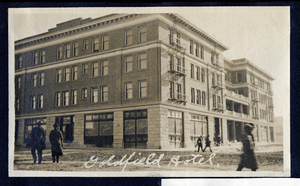
Photograph of the Goldfield Hotel, Goldfield (Nev.), 1900-1920
Date
1900 to 1920
Archival Collection
Description
Caption: Goldfield Hotel
Site Name: Goldfield Hotel (Goldfield, Nev.)
Site Name: Goldfield Hotel (Goldfield, Nev.)
Image
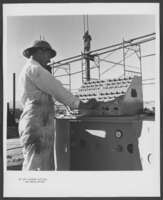
Photograph of construction workers outside of the Sahara Hotel, Las Vegas, Nevada, circa March 1963
Date
1963-03
Archival Collection
Description
Workers at the construction site of a new tower at the Sahara Hotel, Las Vegas, Nevada.
Image
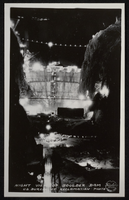
Photograph of Hoover Dam construction at night, circa 1930-1935
Date
1930 to 1935
Archival Collection
Description
An image showing a downstream view of the Hoover (Boulder) Dam construction site at night.
Image
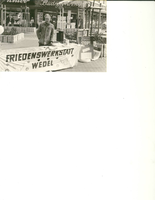
Unidentified protestor at an anti-atomic weapons march: photographic print
Date
1988
Archival Collection
Description
An anti-atomic weapons march in Hamburg, Germany 1988. The man pictured was the first protestor at the solidarity action for the march/demonstration at the Nevada Test Site.
Image
Pagination
Refine my results
Content Type
Creator or Contributor
Subject
Archival Collection
Digital Project
Resource Type
Year
Material Type
Place
Language
Records Classification

